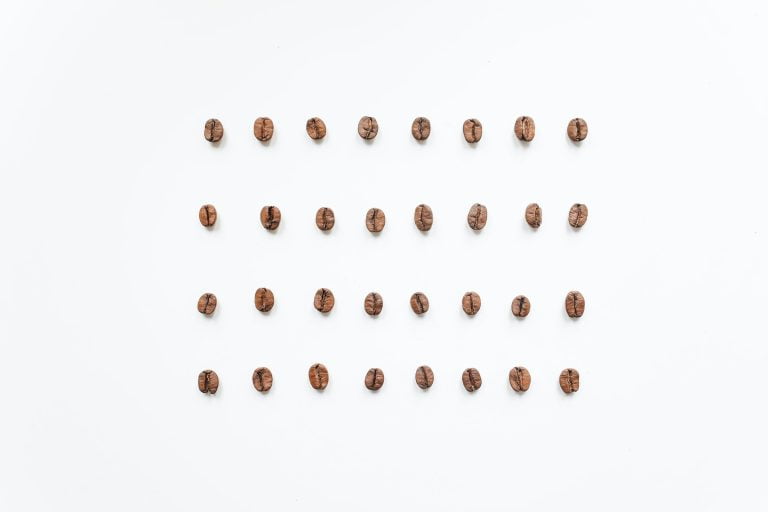Are you tired of dealing with gastric issues that disrupt your daily life? Whether it's bloating, gas, acid reflux, or abdominal pain, these problems can be uncomfortable and can interfere with your overall well-being. If you're looking for a natural and effective way to manage these issues, then yoga might be the solution you've been searching for.
In this article, we will explore how yoga can help alleviate gastric problems and improve your digestive health. We will discuss the benefits of yoga for gastric health, precautions to take before starting a yoga practice, and the top yoga asanas specifically designed to target gastric issues. Additionally, we will explore breathing techniques that aid digestion and provide tips and remedies for better digestive health.
By incorporating these yoga asanas and practices into your daily routine, you can say goodbye to gastric issues and regain control over your digestive health.
Understanding Gastric Issues and their Impact on Daily Life
Gastric issues such as bloating, gas, acid reflux, and abdominal pain can significantly impact your daily life. They can leave you feeling uncomfortable, irritable, and unable to enjoy your favorite activities. Whether it's the constant urge to burp or the discomfort of a distended stomach, these issues can make it difficult to concentrate at work, enjoy meals, and even get a good night's sleep.
The digestive system plays a vital role in our overall health and well-being. It is responsible for breaking down food, absorbing nutrients, and eliminating waste from the body. When there is an imbalance in the digestive process, it can lead to various gastric issues.
Factors such as poor eating habits, stress, lack of physical activity, and medical conditions like gastroesophageal reflux disease (GERD) can contribute to the development of gastric problems. It's important to address these issues as they can have long-term implications on your overall health and quality of life.
The Role of Yoga in Managing Gastric Problems
Yoga, a holistic practice originating from ancient India, offers a range of benefits for our physical and mental well-being. It is a combination of physical postures (asanas), breathing techniques (pranayama), and meditation that promotes the integration of mind, body, and spirit.
When it comes to managing gastric problems, yoga can be highly effective. It focuses on calming the Vatta Dosha, which is responsible for bodily functions such as digestion, elimination, and movement. By incorporating specific asanas and breathing techniques, yoga can help regulate the digestive system, reduce inflammation, and alleviate symptoms of gastric issues.
The practice of yoga helps to improve the overall functioning of the digestive system by increasing blood flow and oxygenation to the abdominal organs. It also stimulates peristalsis, the wave-like contractions of the intestines that aid in the movement of food through the digestive tract. Additionally, yoga helps to reduce stress and promote relaxation, which can have a positive impact on the digestive system.
Benefits of Yoga for Gastric Health
Yoga offers a range of benefits for gastric health. By incorporating specific asanas and breathing techniques into your daily routine, you can experience relief from gas, bloating, acid reflux, and abdominal pain.
Relieves Gas and Bloating
One of the most common symptoms of gastric issues is excessive gas and bloating. This can be uncomfortable and can lead to embarrassment in social situations. Certain yoga asanas are designed to help alleviate gas and bloating by stimulating the digestive system and improving circulation in the abdominal area.
Improves Digestion
Yoga can significantly improve digestion by stimulating the digestive organs and increasing blood flow to the abdominal area. This helps to enhance the efficiency of the digestive process, allowing for better absorption of nutrients and elimination of waste. Regular practice of yoga can also regulate bowel movements, easing constipation and promoting regularity.
Reduces Acid Reflux
Acid reflux, also known as gastroesophageal reflux disease (GERD), is a chronic condition characterized by the backward flow of stomach acid into the esophagus. This can cause a burning sensation in the chest (heartburn) and other uncomfortable symptoms. Yoga asanas that promote gentle stretching and relaxation can help reduce the frequency and severity of acid reflux episodes by improving digestion and reducing stress.
Alleviates Abdominal Pain
Abdominal pain is a common symptom of various gastric issues, including indigestion and irritable bowel syndrome (IBS). Yoga asanas that involve gentle twisting and stretching can help alleviate abdominal pain by promoting the release of tension and improving circulation in the abdominal area. These asanas also help to relax the muscles of the abdomen, providing relief from discomfort.
Precautions and Considerations Before Starting Yoga for Gastric Issues
While yoga can be highly beneficial for managing gastric issues, it is important to take certain precautions and considerations before starting a yoga practice. Here are some key points to keep in mind:
Consultation with a Medical Professional
Before starting any new exercise or wellness program, it is essential to consult with a medical professional, especially if you have a pre-existing medical condition or are on any medications. They can provide personalized guidance based on your specific health needs and help you determine the most suitable yoga practice for your condition.
Awareness of Personal Limitations and Medical Conditions
It is important to be aware of your personal limitations and any existing medical conditions that may affect your ability to practice certain yoga asanas. If you have any injuries, chronic pain, or physical limitations, it is important to modify the poses or seek guidance from a qualified yoga instructor. It is always better to listen to your body and practice within your comfort zone.
Modified Poses for Beginners or Those with Physical Limitations
If you are a beginner or have physical limitations, it is important to start with modified versions of yoga asanas. This can involve using props such as blocks or straps to support your body and make the poses more accessible. Gradually, you can work your way up to the full expression of the pose as your strength and flexibility improve.
Top Yoga Asanas for Gastric Issues
Now let's explore some of the top yoga asanas that specifically target gastric issues and can help alleviate symptoms. Incorporate these asanas into your daily routine to experience relief from gas, bloating, acid reflux, and abdominal pain.
Pawanmuktasana (Wind-Relieving Pose)
Pawanmuktasana, also known as the Wind-Relieving pose, is an effective yoga asana for relieving gas and bloating. It helps to stimulate the digestive system, improve circulation in the abdominal area, and promote the release of trapped gas.
Technique:
To practice Pawanmuktasana, follow these steps:
1. Lie flat on your back with your arms alongside your body and your legs extended.
2. Take a deep breath in and as you exhale, bring your right knee towards your chest.
3. Wrap your arms around your right knee and gently pull it closer to your chest.
4. Hold the position for a few seconds and then release.
5. Repeat the same steps with your left knee and then with both knees together.
Benefits:
– Relieves gas and bloating
– Improves digestion
– Stimulates the digestive system
– Increases blood flow to the abdominal area
Balasana (Child's Pose)
Balasana, also known as Child's Pose, is a restorative yoga asana that helps to relieve stress, calm the mind, and promote relaxation. It also helps to gently stretch the muscles of the back and abdomen, providing relief from abdominal pain and discomfort.
Technique:
To practice Balasana, follow these steps:
1. Start by kneeling on the floor with your knees hip-width apart and your big toes touching.
2. Slowly lower your hips towards your heels as you exhale.
3. Extend your arms forward and place your forehead on the mat.
4. Relax your entire body and hold the pose for a few breaths.
Benefits:
– Calms the mind and reduces stress
– Stretches the muscles of the back and abdomen
– Relieves abdominal pain and discomfort
– Promotes relaxation
Paschimottanasana (Seated Forward Bend)
Paschimottanasana, also known as the Seated Forward Bend, is a powerful yoga asana that stimulates the digestive system, stretches the muscles of the abdomen, and improves blood flow to the abdominal area.
Technique:
To practice Paschimottanasana, follow these steps:
1. Sit on the floor with your legs extended in front of you and your toes pointing towards the ceiling.
2. Inhale deeply and raise your arms overhead.
3. Exhale and bend forward from the hips, reaching towards your feet.
4. Grab onto your toes or ankles, or place your hands on your shins or thighs, depending on your flexibility.
5. Hold the pose for a few breaths and then slowly release.
Benefits:
– Stimulates the digestive system
– Stretches the muscles of the abdomen
– Increases blood flow to the abdominal area
– Alleviates abdominal pain and discomfort
Supta Matsyendrasana (Reclining Spinal Twist)
Supta Matsyendrasana, also known as the Reclining Spinal Twist, is a gentle twisting pose that helps to massage the abdominal organs, enhance digestion, and relieve gas and bloating.
Technique:
To practice Supta Matsyendrasana, follow these steps:
1. Lie flat on your back with your legs extended and your arms by your sides.
2. Bend your right knee and place your right foot on the mat near your left knee.
3. Inhale and as you exhale, gently twist your torso to the right, bringing your right knee towards the floor on the left side.
4. Extend your left arm out to the side and turn your head to the right.
5. Hold the pose for a few breaths, then slowly release and repeat on the other side.
Benefits:
– Massages the abdominal organs
– Improves digestion
– Relieves gas and bloating
– Enhances flexibility in the spine
Ananda Balasana (Happy Baby Pose)
Ananda Balasana, also known as Happy Baby Pose, is a relaxing and gentle asana that helps to relieve tension in the lower back, hips, and abdomen. It stretches the muscles of the inner thighs and massages the abdominal organs, promoting better digestion.
Technique:
To practice Ananda Balasana, follow these steps:
1. Lie flat on your back with your legs extended.
2. Bend your knees and bring them towards your chest.
3. Grab onto the outer edges of your feet with your hands and open your knees wider than your torso.
4. Gently press your knees towards the floor and hold the pose for a few breaths.
Benefits:
– Relieves tension in the lower back, hips, and abdomen
– Stretches the muscles of the inner thighs
– Massages the abdominal organs
– Promotes better digestion
Halasana (Plow Pose)
Halasana, also known as Plow Pose, is an inverted yoga asana that stimulates the abdominal organs, improves circulation in the abdominal area, and relieves digestive issues such as constipation and indigestion.
Technique:
To practice Halasana, follow these steps:
1. Lie flat on your back with your legs extended and your arms by your sides.
2. Inhale deeply and as you exhale, lift your legs towards the ceiling, using your hands to support your lower back.
3. Continue to bring your legs overhead, allowing your feet to touch the floor behind you.
4. Keep your legs straight and your toes pointed, and bring your arms alongside your body with your palms facing down.
5. Hold the pose for a few breaths and then slowly release.
Benefits:
– Stimulates the abdominal organs
– Improves circulation in the abdominal area
– Relieves constipation and indigestion
– Stretches the muscles of the back and neck
Ardha Matsyendrasana (Half Lord of the Fishes Pose)
Ardha Matsyendrasana, also known as Half Lord of the Fishes Pose, is a seated twisting pose that helps to massage the abdominal organs, improve digestion, and relieve bloating and gas.
Technique:
To practice Ardha Matsyendrasana, follow these steps:
1. Sit on the floor with your legs extended in front of you.
2. Bend your right knee and cross it over your left leg, placing your right foot flat on the floor outside your left knee.
3. Inhale and raise your left arm overhead.
4. Exhale and twist your torso to the right, bringing your left elbow to the outside of your right knee.
5. Place your right hand on the floor behind you for support.
6. Gently twist deeper with each exhalation, keeping your spine long.
7. Hold the pose for a few breaths, then slowly release and repeat on the other side.
Benefits:
– Massages the abdominal organs
– Improves digestion
– Relieves bloating and gas
– Stimulates the liver and kidneys
Dhanurasana (Bow Pose)
Dhanurasana, also known as Bow Pose, is a back-bending asana that stretches the entire front of the body, including the abdomen. It stimulates the digestive organs, improves digestion, and relieves constipation and indigestion.
Technique:
To practice Dhanurasana, follow these steps:
1. Lie flat on your stomach with your legs extended and your arms by your sides.
2. Bend your knees and reach back with your hands to grab onto your ankles.
3. Inhale deeply and as you exhale, lift your chest and thighs off the mat, pulling your legs and arms back.
4. Keep your gaze forward and hold the pose for a few breaths, then slowly release.
Benefits:
– Stretches the entire front of the body
– Stimulates the digestive organs
– Improves digestion
– Relieves constipation and indigestion
Trikonasana (Triangle Pose)
Trikonasana, also known as Triangle Pose, is a standing asana that helps to improve digestion, stimulate the abdominal organs, and relieve gastric issues such as constipation and bloating.
Technique:
To practice Trikonasana, follow these steps:
1. Stand with your feet wide apart, facing forward.
2. Turn your right foot out to the side and your left foot in slightly.
3. Inhale and raise your arms to shoulder height, palms facing down.
4. Exhale and extend your torso to the right, reaching your right hand towards your right ankle.
5. Extend your left arm towards the ceiling and gaze up at your left hand.
6. Hold the pose for a few breaths, then slowly come back to the starting position and repeat on the other side.
Benefits:
– Improves digestion
– Stimulates the abdominal organs
– Relieves constipation and bloating
– Stretches the muscles of the legs and torso
Breathing Techniques to Aid Digestion
In addition to yoga asanas, specific breathing techniques, known as pranayama, can greatly aid in digestion and promote gastric health. Below are a few pranayama techniques that you can incorporate into your yoga practice.
Kapalabhati Pranayama (Skull Shining Breath)
Kapalabhati Pranayama, also known as Skull Shining Breath, is an energizing breathing technique that helps to cleanse the respiratory system, increase lung capacity, and aid digestion.
Technique:
To practice Kapalabhati Pranayama, follow these steps:
1. Sit comfortably with your spine erect and your hands resting on your knees.
2. Take a deep breath in and as you exhale forcefully, contract your abdomen to forcefully expel the breath.
3. Allow the inhalation to happen naturally without any effort.
4. Repeat this pattern of forceful exhalation and passive inhalation for several rounds, gradually increasing the speed.
5. Perform this pranayama for about 5-10 minutes, gradually building up your practice.
Benefits:
– Cleanses the respiratory system
– Increases lung capacity
– Stimulates the digestive system
– Energizes the body and mind
Anulom Vilom Pranayama (Alternate Nostril Breathing)
Anulom Vilom Pranayama, also known as Alternate Nostril Breathing, is a calming and balancing breathing technique that helps to harmonize the flow of energy in the body, relieve stress, and aid digestion.
Technique:
To practice Anulom Vilom Pranayama, follow these steps:
1. Sit comfortably with your spine erect and your left hand resting on your left knee.
2. Fold the index and middle fingers of your right hand, leaving your thumb, ring finger, and pinky finger extended.
3. Close your right nostril with your right thumb and take a deep breath in through your left nostril.
4. Close your left nostril with your right ring finger and release your right thumb to open your right nostril.
5. Exhale slowly through your right nostril.
6. Inhale through your right nostril, then close it with your right thumb.
7. Open your left nostril by releasing your right ring finger and exhale slowly through your left nostril.
8. Continue this alternate nostril breathing pattern for several rounds, focusing on deep and even breaths.
Benefits:
– Balances the flow of energy in the body
– Relieves stress and anxiety
– Calms the mind and nervous system
– Aids digestion and improves digestive health
Ujjayi Pranayama (Victorious Breath)
Ujjayi Pranayama, also known as Victorious Breath, is a deep breathing technique that helps to calm the mind, reduce stress, and improve digestion. It involves constricting the back of the throat to create a gentle hissing sound during both inhalation and exhalation.
Technique:
To practice Ujjayi Pranayama, follow these steps:
1. Sit comfortably with your spine erect and your hands resting on your knees.
2. Close your eyes and take a few deep breaths to relax your body and mind.
3. Inhale deeply through your nose, allowing your throat to slightly constrict to create a hissing sound.
4. Exhale slowly through your nose, maintaining the constriction of the throat to create the same gentle hissing sound.
5. Continue this deep, controlled breathing for several minutes, focusing on the sound and sensation of the breath.
Benefits:
– Calms the mind and reduces stress
– Improves concentration and focus
– Enhances oxygenation and circulation
– Aids digestion and promotes digestive health
Building a Consistent Yoga Practice for Gastric Health
To reap the maximum benefits of yoga for gastric health, it is essential to build a consistent and regular practice. Here are some tips to help you establish a sustainable yoga routine:
Setting Realistic Goals and Expectations
When starting a yoga practice, it is important to set realistic goals and expectations. Understand that yoga is a journey and not a destination. Start with small achievable goals and gradually build on them over time. Be patient with yourself and embrace the process.
Establishing a Regular Yoga Routine
Consistency is key when it comes to yoga practice. Try to establish a regular routine that works for you, whether it's practicing for a few minutes every day or a longer session a few times a week. Find a time and space that feels comfortable and inviting, and make a commitment to show up on the mat.
Incorporating other Lifestyle Changes for Optimal Digestive Health
In addition to yoga, it's important to incorporate other lifestyle changes to support optimal digestive health. Eating a balanced diet, staying hydrated, getting regular exercise, and managing stress are essential components of a healthy digestive system. By combining these practices with yoga, you can achieve optimal gastric health.
Additional Tips and Remedies for Gastric Issues
In addition to practicing yoga and pranayama, there are several other tips and remedies that can help alleviate gastric issues and promote better digestive health.
Diet Modifications for Better Digestion
Making certain modifications to your diet can have a significant impact on your digestive health. Avoiding spicy and oily foods, reducing intake of processed and refined foods, increasing fiber intake, and incorporating probiotic-rich foods can help improve digestion and alleviate gastric issues.
Herbal Remedies and Ayurvedic Approaches
Ayurveda, the ancient Indian system of medicine, offers a range of herbal remedies and approaches to promote digestive health. Herbs such as ginger, peppermint, fennel, and chamomile are known for their digestive benefits. Incorporating these herbs into your diet or as herbal teas can help relieve gas, bloating, and other digestive issues.
Stress Management Techniques for Gastric Health
Stress can have a significant impact on your digestive health. Incorporating stress management techniques such as meditation, deep breathing exercises, and mindfulness practices can help reduce stress levels and promote optimal digestive function. Experiment with different techniques and find what works best for you.
Frequently Asked Questions about Yoga for Gastric Issues
Can Yoga Cure Gastric Problems Completely?
While yoga can help manage and alleviate gastric problems, it's important to note that it may not completely cure them. Certain chronic medical conditions such as GERD may require ongoing medical treatment. It is always important to consult with a medical professional and continue with prescribed medications for any health condition, including gastric issues.
Can I Practice Yoga for Gastric Issues during Pregnancy?
Yoga can be a beneficial practice during pregnancy, but it's important to modify your practice to accommodate the changes in your body. Avoid any poses and breathing techniques that involve deep twisting or compressing the abdomen. Consult with a qualified prenatal yoga instructor who can guide you on safe and effective poses to practice during pregnancy.
How Long Does It Take to See Results from Yoga for Gastric Health?
The time it takes to see results from yoga for gastric health can vary from person to person. Some people may experience relief from symptoms within a few weeks, while others may take longer. Consistency and regularity in your yoga practice are essential for long-term benefits. It's important to be patient and give your body time to adapt and heal.
Are There Any Risks or Side Effects Associated with Yoga for Gastric Issues?
When practiced correctly and with the guidance of a qualified instructor, yoga is generally safe for most people. However, certain poses and breathing techniques may not be suitable for individuals with specific medical conditions or physical limitations. It is important to listen to your body, practice within your comfort zone, and seek guidance from a qualified instructor or medical professional if you have any concerns.
Conclusion: Embracing Yoga for Gastric Health and Overall Well-being
Yoga offers a holistic and natural approach to managing gastric issues and improving digestive health. By incorporating specific yoga asanas, breathing techniques, and lifestyle modifications, you can say goodbye to gastric issues and embrace a life of optimal digestive health and overall well-being.
Remember, it is important to consult a medical professional before starting any new exercise or wellness program, especially if you have a pre-existing medical condition or are on any medications. Take the necessary precautions and listen to your body to ensure a safe and effective yoga practice. With dedication and consistency, you can transform your digestive health and experience the countless benefits that yoga has to offer. So, roll out your mat, take a deep breath, and embark on a journey towards optimal gastric health.



